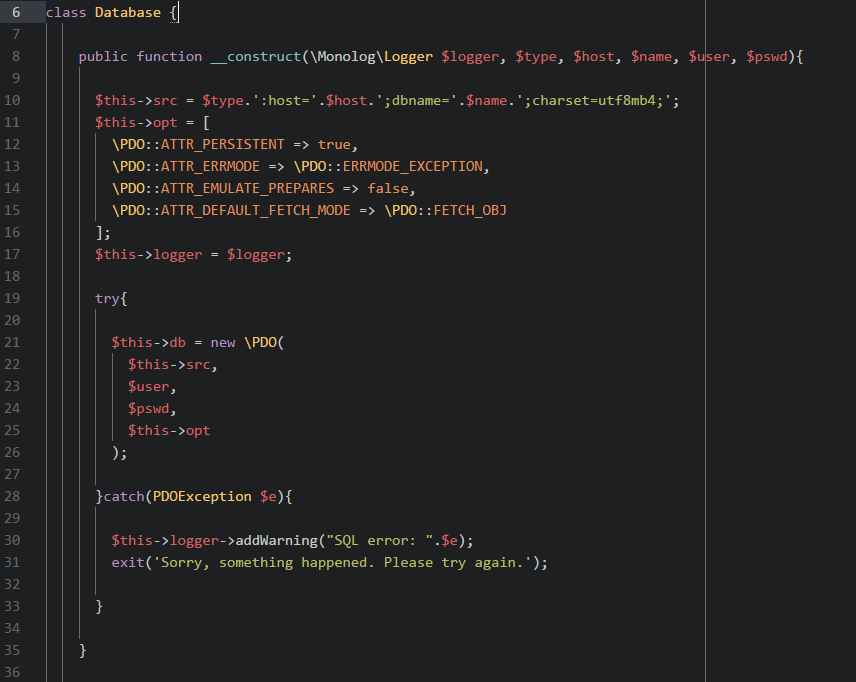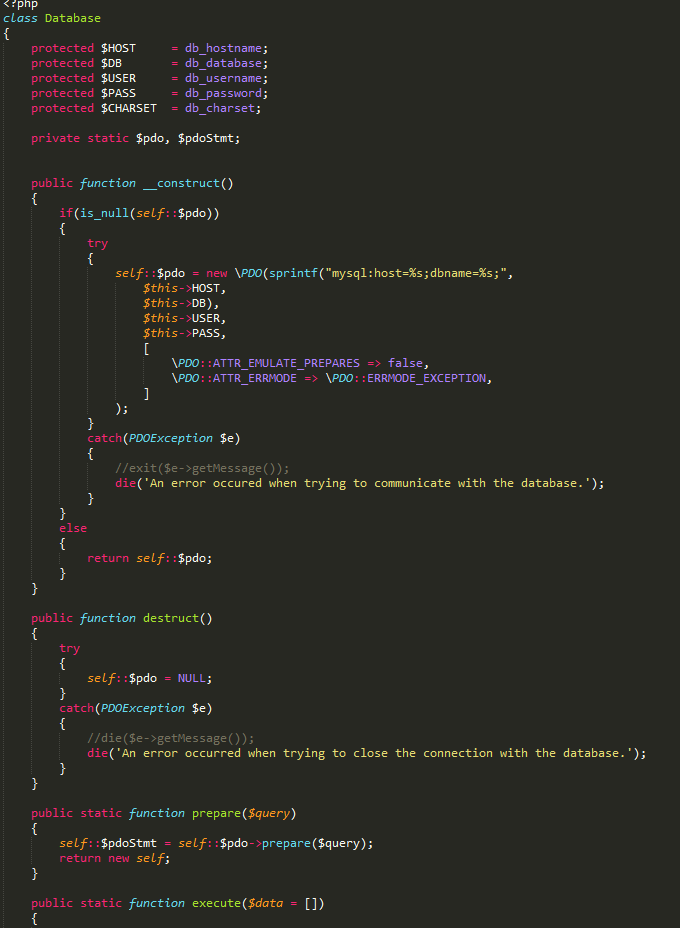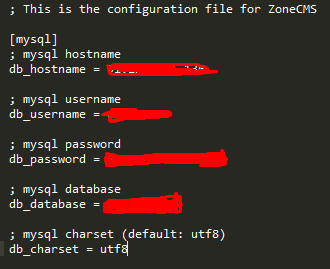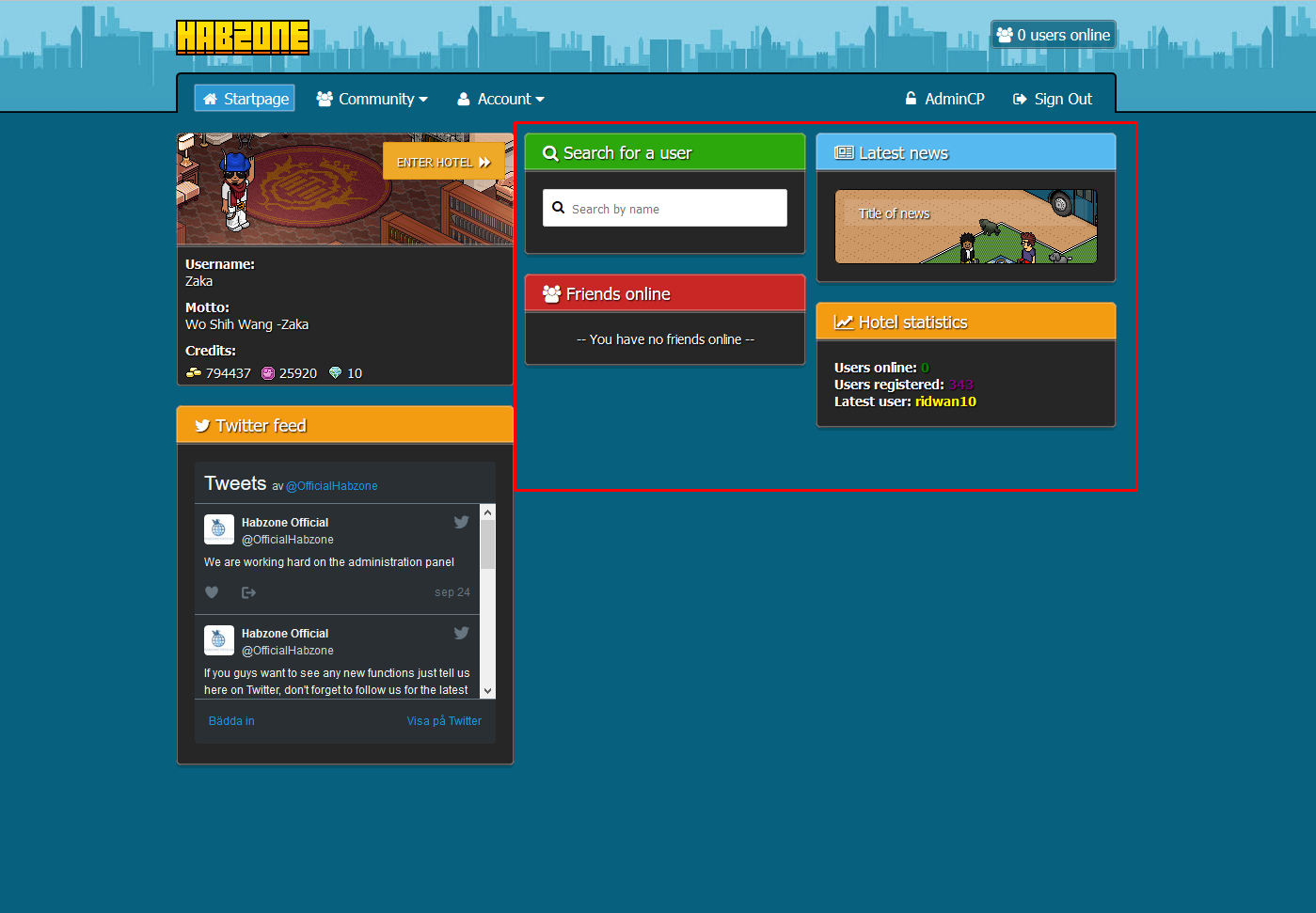You are using an out of date browser. It may not display this or other websites correctly.
You should upgrade or use an alternative browser.
You should upgrade or use an alternative browser.
ZoneCMS: PDO / SECURE / MODERN [PlusEMU - FULL SUPPORT]
- Thread starter Zaka
- Start date
-
- Tags
- development habbo cms zonecms
- Status
- Not open for further replies.
Hender
King Tinkerer
The layout is good, the theme and styling does need work but its getting there.
Some colour changes, font changes and a little CSS should sort it out,
along with useful widgets.
One peice of advice dont go overboard with widgets or it will be BrainCMS all over again (way too much going on).
Other than the theme im glad to see more people coding new systems in modern code.
Some colour changes, font changes and a little CSS should sort it out,
along with useful widgets.
One peice of advice dont go overboard with widgets or it will be BrainCMS all over again (way too much going on).
Other than the theme im glad to see more people coding new systems in modern code.
BIOS
ಠ‿ಠ
- Apr 25, 2012
- 906
- 247
Same.This is what I use to construct and destruct the connection.PHP:public function __construct(array $mysql) { try { $this->pdo = new \PDO( 'mysql:dbname='.$mysql['database'].';host='.$mysql['hostname'].';charset='.$mysql['charset'], $mysql['username'], $mysql['password'] ); $this->pdo->setAttribute(\PDO::ATTR_ERRMODE, \PDO::ERRMODE_EXCEPTION); $this->pdo->exec("SET `time_zone` = '{$this->timeZone()}';"); } catch(PDOException $e) { die($e->getMessage()); } } public function __destruct() { // Destruct the connection to DB once finished try { $this->pdo = null; } catch(PDOException $e) { die($e->getMessage()); } }
Unparameterized queries. You do also realize that it's probably not the best idea to display the getMessage as it can leak information, this is even stated on the PHP manuals.
You're probably best looking up best practices on areas you need to improve rather than listening to a lot of people on here.Well then why don't you suggest some improvements? I'm open for all feedback, constructive criticism.
Here's an example I did quite a while ago

Zaka
Programmer
- Feb 9, 2012
- 471
- 121
- Thread starter
- #26
I know you should not put out messages like that, but I also clearly stated earlier that I wasn't done with the code, I will fix it when I'm "done" with the rest of the cms, for now it's good to get the info.Same.
Unparameterized queries. You do also realize that it's probably not the best idea to display the getMessage as it can leak information, this is even stated on the PHP manuals.
You're probably best looking up best practices on areas you need to improve rather than listening to a lot of people on here.
Here's an example I did quite a while ago

However thanks for your example!
Zaka
Programmer
- Feb 9, 2012
- 471
- 121
- Thread starter
- #28
Yeah, I could let them all like change colors and such on some elements directly on the divs for more personal touch, also they could have the ability to add their own background and so, good idéa actually, might do this!First inspection, it looks great - as the majority have said above, it could do with some sort of customisation, however thats really minor.
I suggest a dynamic theme editor? Allowing users to personalise the colours to their own liking?
BIOS
ಠ‿ಠ
- Apr 25, 2012
- 906
- 247
That wasn't towards you, I was quoting the example that Sentinel gave you.I know you should not put out messages like that, but I also clearly stated earlier that I wasn't done with the code, I will fix it when I'm "done" with the rest of the cms, for now it's good to get the info.
However thanks for your example!
As you're still learning I just didn't want you to take his advice as the snippet he provided is worse than your current in terms of security, although you should still avoid displaying the error to users in your execute() function etc.
Good luck.
MayoMayn
BestDev
- Oct 18, 2016
- 1,423
- 683
Actually you're plain wrong. Showing the errors really got nothing to do with security, if you already know at first, you've entered the correct details. It actually DONT try for the connection only, but also for statements etc, which yes, would be better to put into a log or something, but if you have NGINX like I do, an 500 error appears and the error gets logged instead of showing the credentials.That wasn't towards you, I was quoting the example that Sentinel gave you.
As you're still learning I just didn't want you to take his advice as the snippet he provided is worse than your current in terms of security, although you should still avoid displaying the error to users in your execute() function etc.
Good luck.
Zaka
Programmer
- Feb 9, 2012
- 471
- 121
- Thread starter
- #31
I appreciate all input, we are all still learning. We never finish learning and improving.That wasn't towards you, I was quoting the example that Sentinel gave you.
As you're still learning I just didn't want you to take his advice as the snippet he provided is worse than your current in terms of security, although you should still avoid displaying the error to users in your execute() function etc.
Good luck.
BIOS
ಠ‿ಠ
- Apr 25, 2012
- 906
- 247
I'm not wrong, it's the developer's role to handle the error correctly by catching it and then usually log it somewhere. Yes it does have something to do with security, it's effectively known as information leakage which was on the top 10 a few years back.Actually you're plain wrong. Showing the errors really got nothing to do with security, if you already know at first, you've entered the correct details. It actually DONT try for the connection only, but also for statements etc, which yes, would be better to put into a log or something, but if you have NGINX like I do, an 500 error appears and the error gets logged instead of showing the credentials.
"if you already know at first, you've entered the correct details. It actually DONT try for the connection only, but also for statements etc, which yes, would be better to put into a log or something, but if you have NGINX like I do, an 500 error appears and the error gets logged instead of showing the credentials"
You're forgetting this is in the development section therefore at some point it may be released and used by other people, they're not all going to have the same details; therefore there's an high chance that the connection will fail and expose the user/host and so on. Not all hotel users will run NGINX nor will they have the same configuration as you, most use IIS if I'm correct in saying so, therefore it will still be exposed.
Zaka
Programmer
- Feb 9, 2012
- 471
- 121
- Thread starter
- #33
Guys please stay on topic, this is a development thread for ZoneCMS. And yes you are right others will have other information, and I don't leave anything for chance. I will re-code the db class a bit and implement try and catch with the error messages not showing up in public, but logged instead.I'm not wrong, it's the developer's role to handle the error correctly by catching it and then usually log it somewhere. Yes it does have something to do with security, it's effectively known as information leakage which was on the top 10 a few years back.
"if you already know at first, you've entered the correct details. It actually DONT try for the connection only, but also for statements etc, which yes, would be better to put into a log or something, but if you have NGINX like I do, an 500 error appears and the error gets logged instead of showing the credentials"
You're forgetting this is in the development section therefore at some point it may be released and used by other people, they're not all going to have the same details; therefore there's an high chance that the connection will fail and expose the user/host and so on. Not all hotel users will run NGINX nor will they have the same configuration as you, most use IIS if I'm correct in saying so, therefore it will still be exposed.
I have made some progress, and updated some of the code. Thanks to @Sentinel for examples of improvements regarding my database class. The credentials are now read from a config.ini file which allows me to, later, create a install file for the cms.
Database class

config.ini


config.ini

I know that I have not fixed the "security issue" with messages going straight out, but I will fix that when time comes. Also worth to notice was that when I tried to run __destruct() inside my database class I would just get a 500 Internal Server Error code since it seems that when database class is destroyed I can't use it in my subclasses which extends the database class. So I ended up creating a destruct() function in the database class which I then run in the other classes like this:
PHP:
public function __destruct() {
parent::destruct();
}MayoMayn
BestDev
- Oct 18, 2016
- 1,423
- 683
You gotta use __destruct() and not just destruct() in your database class, otherwise it sees is as a class functionGuys please stay on topic, this is a development thread for ZoneCMS. And yes you are right others will have other information, and I don't leave anything for chance. I will re-code the db class a bit and implement try and catch with the error messages not showing up in public, but logged instead.
I have made some progress, and updated some of the code. Thanks to @Sentinel for examples of improvements regarding my database class. The credentials are now read from a config.ini file which allows me to, later, create a install file for the cms.
Database class

config.ini

I know that I have not fixed the "security issue" with messages going straight out, but I will fix that when time comes. Also worth to notice was that when I tried to run __destruct() inside my database class I would just get a 500 Internal Server Error code since it seems that when database class is destroyed I can't use it in my subclasses which extends the database class. So I ended up creating a destruct() function in the database class which I then run in the other classes like this:
I appreciate all the feedback I've been given, all the tips and tricks to improve my code! Thanks all of you, and hopefully I will soon be able to release this to everyone.PHP:public function __destruct() { parent::destruct(); }
 . It seems to be working fine for me. Did you try to destruct the self::$pdoStmt then thats why, because it can only be capable of destroying self::$pdo since the self::$pdoStmt is still used later on.
. It seems to be working fine for me. Did you try to destruct the self::$pdoStmt then thats why, because it can only be capable of destroying self::$pdo since the self::$pdoStmt is still used later on.Zaka
Programmer
- Feb 9, 2012
- 471
- 121
- Thread starter
- #35
I'm aware of that, I don't have a valid destruct function in database class, but I do have a valid one in the rest of the classes. I don't know really why it's messing around, but my guess so far is that it's giving me 500 internal server error because of me using the class in subclasses. Which makes no sense because in subclasses you call the constructor of the parent again. It got me irritated so I did it like this and left the database class without a __destruct() function.You gotta use __destruct() and not just destruct() in your database class, otherwise it sees is as a class function. It seems to be working fine for me.
MayoMayn
BestDev
- Oct 18, 2016
- 1,423
- 683
Oh yeah okay, I only extend my autoload class, so it works fine for meI'm aware of that, I don't have a valid destruct function in database class, but I do have a valid one in the rest of the classes. I don't know really why it's messing around, but my guess so far is that it's giving me 500 internal server error because of me using the class in subclasses. Which makes no sense because in subclasses you call the constructor of the parent again. It got me irritated so I did it like this and left the database class without a __destruct() function.

Zaka
Programmer
- Feb 9, 2012
- 471
- 121
- Thread starter
- #37
Yeah, so there is really no query in there that needs to be executed after database class is run. Also I don't use an autoload class since there isn't really loads of classes to load. Seems like overkill, but might do it just because it looks prettier.Oh yeah okay, I only extend my autoload class, so it works fine for me
MayoMayn
BestDev
- Oct 18, 2016
- 1,423
- 683
Yeah, I got around 20 classes, so its just way easier that way for meYeah, so there is really no query in there that needs to be executed after database class is run. Also I don't use an autoload class since there isn't really loads of classes to load. Seems like overkill, but might do it just because it looks prettier.

Zaka
Programmer
- Feb 9, 2012
- 471
- 121
- Thread starter
- #39
I guess it's just good practice to add a autoload class so that in the future, if new classes were to be added, they would basically just have to put the file in the correct folder.Yeah, I got around 20 classes, so its just way easier that way for me
Zaka
Programmer
- Feb 9, 2012
- 471
- 121
- Thread starter
- #40
Some fine code right there. So what is a container class really good for? Now this is some new territory, and it seems very interesting, so I would like to understand this fully. When I do understand it, then I can think about implementing the code into the CMS.Dunno if this can be of any use to your CMS, but I've just begun coding a container for the sake of it:
index.php
class.container.phpPHP:ini_set('display_errors', 1); error_reporting(E_ALL); $mysql = parse_ini_file('mysql.ini'); if(!defined('DIR')) { define('DIR', dirname(__FILE__) . DIRECTORY_SEPARATOR); foreach($mysql as $key => $value) { define($key, $value); } } require_once DIR . 'app/class.container.php'; $container = new Container(); // Set all the required classes $container->setClasses([ 'Database' => 'app/class.db.php', 'Core' => 'app/class.core.php' ]); // Use the class outside a function $core = $container->Core; echo $core->test();
class.core.php - with __construct()PHP:class Container { /** * @var array; */ public static $library, $class, $store; /** * How to access the Container file. * There's two ways: * 1) __construct function * 2) extend Container class */ public function __construct() { if(isset(self::$class)) { foreach(self::$class as $key => $value) { $this->{$key} = $value; } } } public function setClasses($class = []) { if(!isset(self::$class)) { //$dir = DIR . "app/*/"; foreach($class as $name => $file) { $file = DIR . $file; //$name = substr($file, 0, strrpos($file, '.')); //$name = ucfirst(substr($name, ($pos = strpos($name, '.')) !== false ? $pos + 1 : 0)); //$name = ucfirst(substr($file, strlen($dir) + 6, -4)); if(!isset(self::$library[$name])) { require_once $file; if(class_exists($name)) { self::$library[$name] = $file; self::$class[$name] = new $name(new self); $this->{$name} = self::$class[$name]; } else { die("Unable to load class: {$name}"); unset(self::$library[$name]); } } } } } public function __destruct() { self::$store = []; } public static function setLocal(array $data) { if(!isset(self::$store[md5($data)])) { foreach($data as $key => $value) { self::$store[$key] = $value; } self::$store[md5($data)] = true; } } public static function getLocal() { return (isset(self::$store) ? self::$store : null); } public static function getClasses() { return self::$class; } public static function getLibraries() { return self::$library; } public static function getLibrary($name) { return self::$library[$name]; } public static function getClass($name) { return $this->{$name}; } }
class.core.php - with extended classPHP:class Core { protected $db; public function __construct(Container $container) { $this->db = $container->Database; } public function test() { $result = $this->db->query("SELECT `username` FROM `users` WHERE `rank`>= 1")->run()->fetch(); return $result; } public function test2() { return $this->core->getIP(); } }
class.db.phpPHP:class Core extends Container { protected $db; public function test() { $result = Database::query("SELECT `username` FROM `users` WHERE `rank`>= 1")->run()->fetch(); return $result; } public function test2() { return $this->core->getIP(); } }
I did make it automatic checking for all files inside the app folder, but there were some issues, so I just decided that you'd have to manually choose the url for the class, which is fine by my opinion.PHP:class Database { protected $HOST = hostname; protected $DB = database; protected $USER = username; protected $PASS = password; protected $CHAR = charset; private static $pdo, $stmt; public function __construct() { if(!isset(self::$pdo)) { try { self::$pdo = new \PDO(sprintf("mysql:host=%s;dbname=%s;", $this->HOST, $this->DB), $this->USER, $this->PASS, [ \PDO::ATTR_EMULATE_PREPARES => false, \PDO::ATTR_ERRMODE => \PDO::ERRMODE_EXCEPTION ] ); } catch(PDOException $e) { die('An error occurred when trying to communicate with the database.'); } } else { return self::$pdo; } } public function __destruct() { // Destruct the connection to DB once finished try { self::$pdo = null; } catch(PDOException $e) { die('An error occurred when trying to close the connection with the database.'); //die($e->getMessage()); } } public static function query($sql) { self::$stmt = self::$pdo->prepare($sql); return new self; } public static function run($data = null) { try { self::$stmt->execute($data); return new self; } catch(PDOException $e) { die("Execution error: " . $e->getMessage()); } } public static function fetchAll($type = \PDO::FETCH_ASSOC) { return self::$stmt->fetch($type); } public static function fetch() { return self::$stmt->fetchColumn(); } public static function fetchEach($data = []) { foreach(self::$stmt as $value) { } } }
I'm definitely gonna use this for my own.
- Status
- Not open for further replies.
Users who are viewing this thread
Total: 2 (members: 0, guests: 2)


